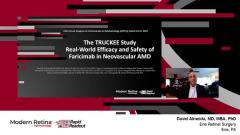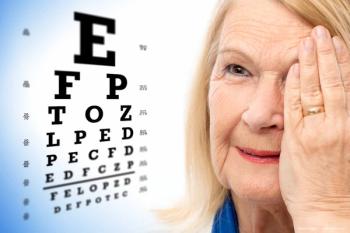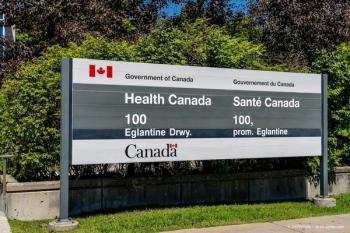
Two Faricimab Patient Cases from the Real-world in Neovascular AMD
Dr David Almeida shares two cases of neovascular AMD from his practice, one treatment-naïve and one previously treated, and presents his findings after switching them to faricimab.
Episodes in this series
David Almeida, MD, PhD, MBA: From TRUCKEE and the analysis of faricimab in the post-approval, postmarketing phase 4 setup of that TRUCKEE design, I’m going to present a couple of cases that are illustrative of the ability of faricimab in patients who are treatment naïve or have been switched and have had positive effects on the anatomy, namely OCT [optical coherence tomography] central subfield thickness, anatomical biomarkers, and vision improvement. The first case is a treatment-naïve patient with neovascular AMD [age-related macular degeneration]. This is a 70-year-old patient with atypical risk factors. She is phakic and converted to neovascular age-related macular degeneration, with a significant decrease in vision, to about 20/100 in the right eye. Her central subfield thickness, which you’ll see on the images, was significantly elevated with the exudative activity.
This illustration shows a course involving 4 faricimab injections. At baseline, this patient is 20/100, and you see this large choroidal neovascular pigment epithelial detachment complex. There’s subretinal fluid, intraretinal fluid, and quite a loss of the architecture of the intraretinal layers, which usually portends worse prognostic outcome in these patients. Four weeks after that baseline, after 1 faricimab injection, we see an improvement to 20/80. The most important to take from this case is that right away, we see this improvement in that intraretinal space, which is important to reconstituting the layers that are going to be associated with improving vision. Unlike the outer retina and subretinal fluid, which you can sometimes tolerate a little, this intraretinal fluid in the inner retina tends to be more significantly associated with worse outcomes.
After the second faricimab injection 6 weeks later, we see that the vision is holding at 20/80, but we continue with this nice improvement in anatomy and central subfield thickness up to 373 μm. The inner retina looks quite good. There’s still some hyper-reflective material in the subretinal space and subretinal fluid after the third injection of faricimab. In 8 weeks, the patient has improved to 20/70. That whole choroidal neovascular membrane pigment epithelial detachment complex is subsiding, and the treatment is starting to get a more positive response in patients with neovascular AMD. When we look at the summary, this patient started at 20/100. But over a few months, and after 3 faricimab injections, improved to 20/70 with a better OCT and was able to be extended to 8 weeks. This is something we hadn’t appreciated or felt that we had before faricimab. Now we can take a treatment-naïve patient, treat them, and go to a faster extension period. At least with respect to the FDA, this would be an off-label extension because it doesn’t have a loading dose. Nonetheless, it shows other clinical specialists that you can use this to have good stability with rapid extension and that these patients do quite well.
Patient No. 2 is a different scenario. This is a patient who is underrepresented or typically not going to be involved in registry trials for various reasons, to minimize variables and ascertain what the therapeutic and safety effects of the IMP in question is. This patient is a 76-year-old woman. She has been having regular treatment with aflibercept at 4 or 5 weeks for over 4 years. This patient has required a high treatment burden approach of 4- to 5-week injections and regular treatment. We were never able to extend anywhere up to 8 weeks or beyond. As we see in this panel, this is after aflibercept injection No.35 and aflibercept injection No. 36. This patient is staying at around 5 weeks. The vision is holding at 20/60, but there’s still lots of exudative activity and subretinal fluid. There’s what looks like a large, fibrovascular choroidal neovascular pigment epithelial detachment complex, and it persists. These patients are tricky and sometimes difficult in the sense that 20/60 vision has this level of inertia. It can sometimes keep you going, doing the same thing, tolerating it but not realizing that you may be leaving vision on the table that can improve that patient. After the first faricimab injection, 5 weeks after, the vision is still 20/60. But for the first time, we see a significant improvement in that subretinal architecture: subretinal fluid and choroidal neovascular pigment epithelial detachment complex. Eight weeks after the faricimab No. 2, vision has improved to 20/50. We see further modeling that extends nicely when we look at 10 weeks. After faricimab No. 3, the vision is 20/40, which is an all-time high for a patient like this and with much better anatomy.
When we summarize the second case of a switch patient, a patient with difficult disease who had a high treatment burden, who was unable to be extended beyond 4 or 5 weeks with regular aflibercept. After switching to faricimab, we see an improvement from 20/60 to 20/40, and we see a nice improvement in their anatomical outcomes with decreased subretinal fluid, a flattening or respiration of their choroidal neovascular membrane and pigment epithelial detachment complex, leading to this nice stability and longer treatment duration. The patient was at 8 weeks, extended to 10 weeks, and with good durability and no new safety signals that appear. When we take both cases, we see that faricimab—as with TRUCKEE—allows treatment-naïve patients and patients with recalcitrant disease to be addressed and treated with 1 therapeutic. A biphasic compound addresses these disease mechanisms, and it is a novel way with good safety and is reassuring. It’s exciting to a lot of physicians who plan on using this as we saw in COPHy [Congress on Controversies in Ophthalmology] and with the positive response to a lot of the discussions centered on this.
Transcript edited for clarity
Newsletter
Get the essential updates shaping the future of pharma manufacturing and compliance—subscribe today to Pharmaceutical Technology and never miss a breakthrough.








































